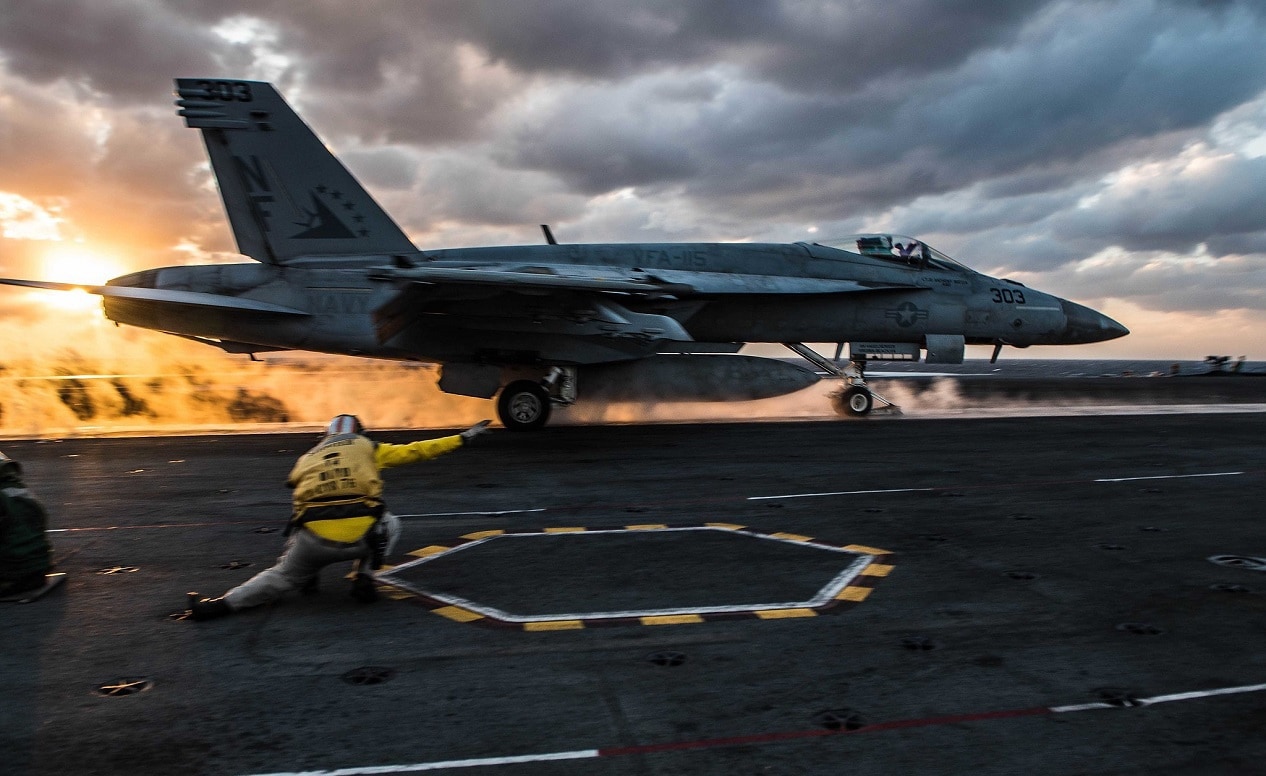The U.S. Navy’s top officer in the Indo-Pacific region has asked for more aircraft carriers to deter China and Russia.
Vice Admiral Karl Thomas, commander of the U.S. Navy’s 7th Fleet, spoke to reporters at the end of a major multinational exercise in the Pacific Ocean. He called for more flattops to persuade America’s near-peer adversaries that “today is not the day to start a conflict,” according to the Wall Street Journal.
We Need More Aircraft Carriers
While clearly pleased two carriers, one from the US and UK, were able to train together recently in the Pacific, Thomas added that “[W]hen we think about how we might fight, it’s a large water space, and four aircraft carriers is a good number, but six, seven or eight would be better,” according to the Wall Street Journal.
Although the U.S. Navy has ten supercarriers, it doesn’t deploy all of them at the same time or in the same region. America’s global responsibilities and interests mean that those vessels are divided across the seven seas, while some are going through refitting and maintenance at port.
As the world’s superpower, the U.S. is spread across the globe, focusing more on specific regions depending on circumstances. For example, when the wars in Iraq and Afghanistan were the Pentagon’s primary concern, American aircraft carriers made the Persian Gulf and the Arabian Sea their hub. But that has now changed with the Indo-Pacific and Chinese truculence, becoming the Pentagon’s primary concern.
Conversely, China has the largest navy in the world and can deploy more than 700 vessels in the event of a conflict. More importantly, Beijing can focus all of its military power in the region as it doesn’t have any serious global presence—although that is changing because the Chinese Communist Party definitely has global ambitions.
China has two aircraft carriers and is building a third.
The only way to deploy more aircraft carriers in the Indo-Pacific is to leverage the power of Allies. The United Kingdom has HMS Queen Elizabeth, which was in the region only recently, and is building HMS The Prince of Wales. France has the nuclear-powered Charles de Gaulle, and India, who has its own issues with China, can field a couple.
But Beijing’s and Moscow’s Area-Denial/Anti-Access (AD/A2) capabilities might restrict any allied aircraft carriers operating in hostile waters.
Thomas also called Russia, which recently finished a joint naval exercise around the Japanese home islands, aggressive and authoritarian, adding that the U.S. and its allies ought to hold joint exercises in order to “deter aggression from some of these nations that are showing burgeoning strength [and] tell these nations that maybe today is not the day [for a war].”
Aircraft Carriers
Aircraft carriers weren’t considered the top dog of naval warfare until the Japanese attack on Pearl Harbor when a swarm of aircraft taking off from four aircraft carriers sunk, destroyed, or damaged the U.S. Pacific Fleet in December 1941.
Perhaps the most famous aircraft carrier battle took place in the Pacific theater of World War Two when the Imperial Japanese Navy and U.S. Navy clashed during the Battle of Midway in 1942. In total, the battle involved seven aircraft carriers, four Japanese and three American, and dozens of other warships. In the end, after a brutal fight, all Japanese aircraft carriers were sunk at the cost of only one American.
The Battle of Midway was a turning point in the war as it allowed the U.S. to steadily gain sea superiority and launch its “island-hopping” campaign that led the Allies to the doorstep of Japan unhindered.
Since then, the aircraft carrier has become the go-to option for regional- or super-power force projection worldwide. In short, any country that wants to claim a serious, global, and expeditionary military capability must have a credible aircraft carrier, with the more, the better.
1945’s New Defense and National Security Columnist, Stavros Atlamazoglou is a defense journalist specializing in special operations, a Hellenic Army veteran (national service with the 575th Marine Battalion and Army HQ), and a Johns Hopkins University graduate.

